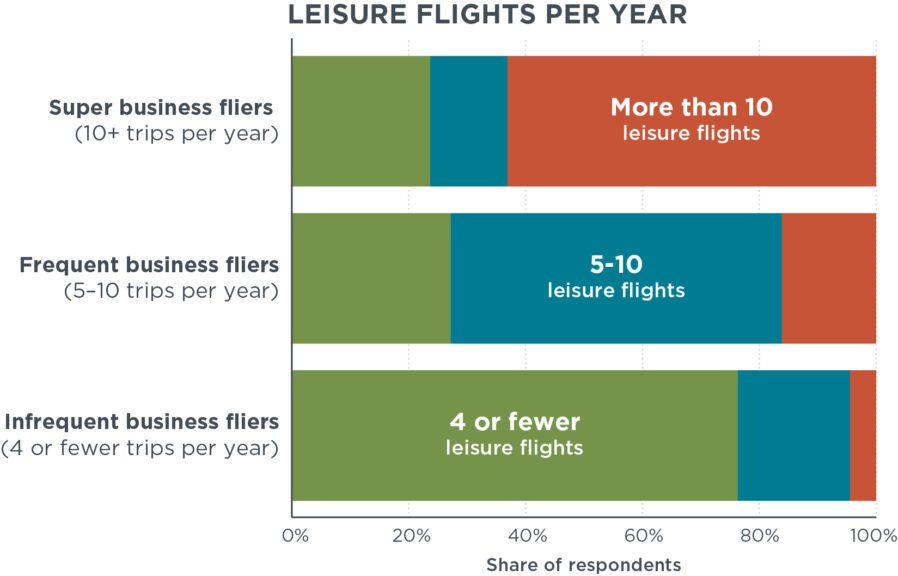Aviation climate finance using a global frequent flying levy
Blog
Fair fares for the climate
The United Nations took an important step last year when it agreed to a net-zero carbon dioxide (CO2) goal for international aviation by 2050. But industry angst is growing about the potential costs of that transition. Qatar Airways CEO Akbar Al Baker recently made headlines by arguing that the aviation industry isn’t on track to achieve net zero in 2050 because of the slow uptake of alternative jet fuels. Moreover, a new study by Bain & Company argues that deep cuts in CO2 below current levels are unlikely and that achieving net-zero emissions will increase airline operating costs by 8% to 18% and significantly erode their profit margins. For their part, governments representing emerging economies like India have argued for additional space to grow their aviation sectors before achieving net-zero emissions.
Last September, the ICCT published a study on how a frequent flying levy, a progressive taxation of air tickets as a function of how often an individual flies, could help generate revenue for the net-zero transition in an equitable way. That study estimated that an FFL tax on the world’s frequent fliers—the 2% of the global population who take about 40% of all trips—could generate more than 80% of the revenue needed for decarbonization.
An FFL enjoys widespread support in environmental and social justice communities but, unfortunately, not so much from airlines. This shouldn’t surprise us. Aside from the practical and political questions about imposing a new tax worldwide, the FFL targets airlines’ most important customers. However, a flat increase in ticket prices could hit the poorest travelers hardest, as shown in our FFL paper. So, what strategies could airlines adopt instead of a tax on frequent fliers or across-the-board fare hikes?
Luckily, airlines have sophisticated ticket pricing structures to pass along costs to those that can most readily pay—business travelers. These rules, described in this excellent video primer, employ tactics like advance-purchase and minimum-stay requirements to distinguish business from leisure travelers. These rules allow airlines to sell the identical product (e.g., a premium economy seat) at a higher cost to business travelers while keeping costs low for more price-sensitive leisure travelers. There’s reason to believe that these same rules can be used to pass along the higher costs of clean fuels to wealthier frequent fliers.
That’s because people who fly frequently for work also fly frequently for leisure, according to data compiled by the International Air Transport Association (figure). Two-thirds of the passengers surveyed flew infrequently for work, defined here as taking four or fewer work trips per year. But flying frequently for business (five or more times per year) makes it three times more likely that someone also flies frequently for leisure. The effect is even more skewed for the super fliers who take more than 10 work trips per year. These road warriors are 15 times more likely than infrequent business fliers to fly more than 10 times per year for leisure.

Figure. Number of leisure flights taken each year by business fliers. Source: International Air Transportation Association 2022 Global Passenger Survey.
It’s well known that ticket purchasing behavior varies between business and leisure travelers; that’s the whole basis for making seats on short trips purchased close to the departure date more expensive because companies are more likely to pick up the bill, not individuals. However, it’s a reasonable guess that, if a person flies frequently for both work and leisure travel, their purchasing behavior will be more similar across both types of travel than not.
What does this all mean? It means that, when choosing how to pass along the costs of meeting net-zero targets to consumers, airlines concerned about equity should be able to leverage existing pricing structures to pass along more of the costs to work travelers and to wealthier leisure travelers. For example, an overall cost increase of 10% to finance emissions reductions might be broken down into a 15% cost increase for fare classes meant for work travel but only a 5% cost increase for fare classes commonly purchased for leisure travel.
This approach would assign a larger share of mitigation costs to companies, not consumers. And it would also raise prices more for those frequent leisure fliers who, just like business travelers, purchase higher-priced fare classes. An even more direct approach would be for airlines to assign more decarbonization costs to premium seating, which is clearly a luxury good. Infrequent leisure travelers will keep buying the cheapest tickets that—as in the example above—have a lower percentage of the total price going toward emissions reductions.
To be clear, I don’t expect this to be the only solution for covering the cost of the net-zero transition. Voluntary approaches to help cover the price premium of alternative jet fuels, through efforts like the Sustainable Aviation Buyers Alliance (SABA) and Lufthansa’s “Green Fares,” will also be needed. Likewise, disclosing emissions at the time of booking empowers consumers, as argued in this paper. Still, one important strategy—to use existing ticket-pricing strategies to pass on more of the costs to work and frequent fliers—could already be at the gate.
